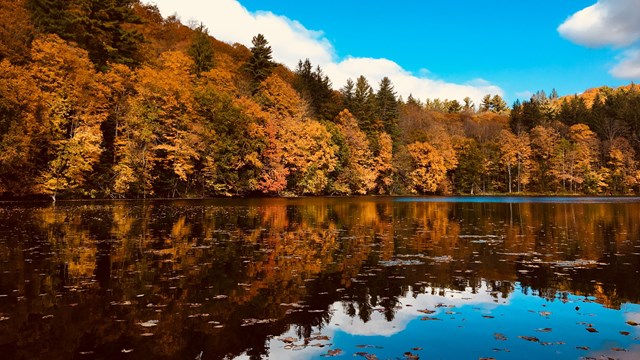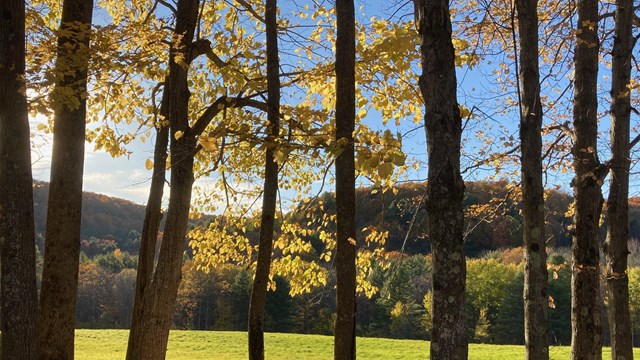
NPS Photo / Daughtery Nature's Ancient SurvivorsFerns are one of the oldest groups of plants on Earth and can be found in the fossil record as far back as 400 million years. Ferns thrive in a moist, forested environment but can be found in any number of climates. Some of the ferns found at Marsh-Billings-Rockefeller National Historical Park have been on the hillside of Mount Tom for millennia. Diversity and StructureFerns are a diverse plant group and can take many different forms. The leaves of ferns are commonly called fronds, made up of a leafy blade and a leaf stalk, or petiole. The shape, size, and texture of the petiole and frond can vary from species to species. Despite the wide variety, an easy way to identify different fern species is with the leaflet shapes on different fern fronds. The species of fern differentiates how many divisions are present in the frond leaf. 
NPS Photo / Daughtery Reproduction of FernsMost ferns are perennial plants. A mature fern, or a fern that is in the sporophyte phase, is easily spotted by its large fronds. When ferns enter their sporophyte phase, they are ready to reproduce. Ferns reproduce asexually; they create genetic copies of themselves through the release of spores or bulbets. To release spores, a mature fern grows sori. If you look at the underside of a fern’s frond leaf, you may notice little black or brown dots. Those are sori! A sori contains the spores of the plant. When the spores are mature, the sori bursts, releasing the spores. Ferns typically release their spores in the summertime, and if the spore particles land in a suitable environment, like in moist soil, they can germinate and grow. If a fern is reproducing vegetatively, the fern grows bulblets. Bulblets are small vegetative buds that grow on the fronds of several fern species. When a bulblet is pressed to the ground or falls off a frond, it may take root and grow into a fern. The Importance of FernsFerns are an incredibly adaptive plant group. They can thrive in wetlands, arid climates, and can be found in environments that have recently been disturbed, like areas impacted by wildfires. The species diversity of ferns is due to their ability to live longer lives and adapt. However, the adaptability of ferns can be a concern if they take over the plant life beneath a forest’s canopy, often referred to as the understory. On the other hand, learning how ferns adapt to various climates can give us clues as to how other plant species may be able to adapt to our changing climate. By learning what ferns are native to your area, how to identify them, and noticing how those ferns are present on the landscape, we can see how the forest changes over time. Fern Species observed at Marsh-Billings-Rockefeller National Historical ParkVisit our Northeast Temperate Inventory & Monitoring Network page for a comprehensive list of all species observed in the park.
Natural Resource Monitoring
The Northeast Temperate Inventory & Monitoring Network posts annual reports on forest health, air quality, and more. 
Forest Health Monitoring Insights
The Northeast Temperate Network has been monitoring the park's forest health since 2006. Read their summary of forest health from 2018. 
The Mount Tom Forest
The woods that cover Mount Tom stand as both a model of scientific forestry practices and a beloved public resource. |
Last updated: October 19, 2024
